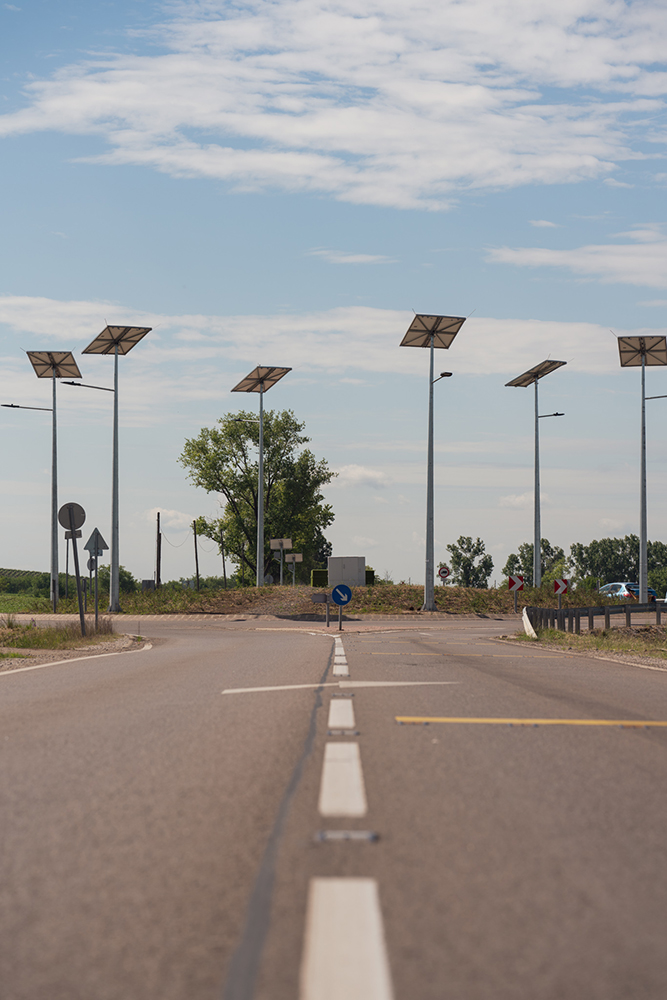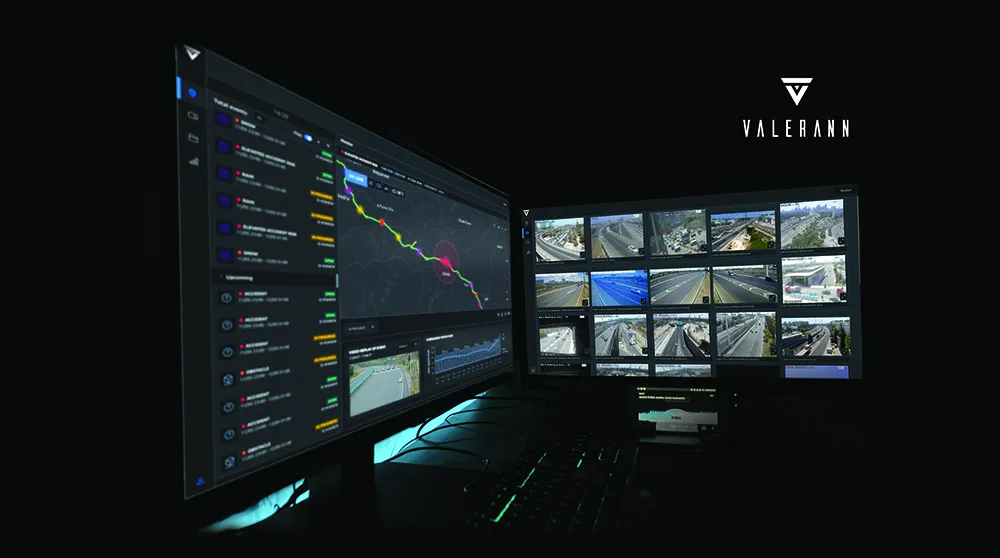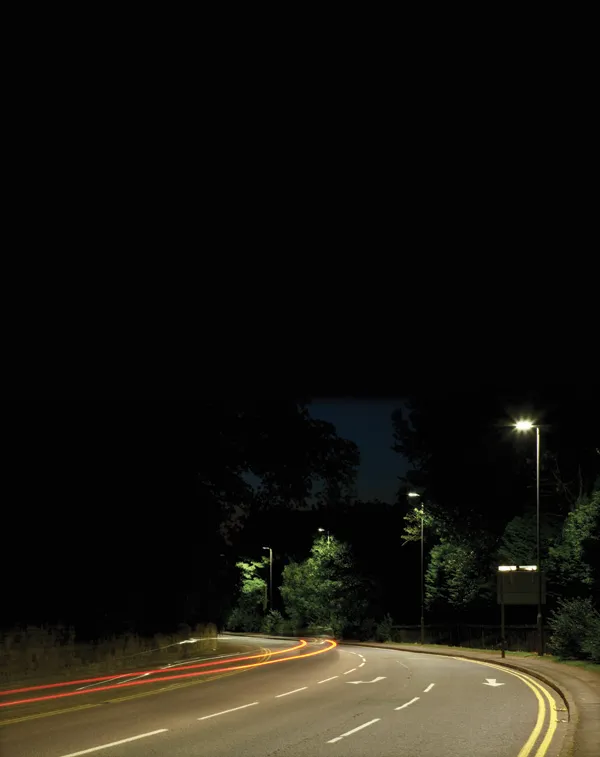
The roundabout at the south end of Andornaktálya village was completed in the summer of 2018 as part of the construction of express road M25 in north-east Hungary. Experiences gained since it was commissioned showed that the intersection needed good lighting for the safety of drivers and cyclists alike.
A solar panel lighting system was installed which has a storage capacity sufficient to cover the energy needs of the functional lighting all year round. Power for the lighting is provided using solar panels to supply rechargeable batteries which provide power to the lights.

The core feature of this solution is that light is provided in the intersection using candelabra-style lights on top of the poles installed on the roundabout island and also at bicycle crossings (see aerial image). This means that those entering the intersection will not encounter any separate functional lighting columns. In other words, only those lights needed for the motorist/cyclist will be powered up from a low level to full strength as vehicles approach.
This custom-developed functional lighting works independently of the grid. The LED lamps provide a light level of 10 lux by default in the roundabout and 15 lux at the cycle crossing.
However, a fixed power connection has also been installed as backup in case the solar system does not generate sufficient power. This is useful during winter when night comes sooner and there are fewer hours of sunlight to recharge the batteries. In this case, when the batteries drain to 60%, the system automatically switches to the fixed power connection. The system continues to run off the grid until the solar system again generates sufficient energy to recharge the batteries – but not necessarily to full capacity – and they can then operate the system safely.
This functional lighting was installed last November. Once the pilot was over, the system was fine-tuned further from the beginning of the year, and is now working perfectly. Ever since the final adjustment, it has never been necessary for the system to run off the grid.
Industrial motion detector sensors are situated on the lampposts at all four road entrances and at the bicycle route entry point. The sensors adjust light levels. This means that a significant proportion of energy can be saved, as the standard 10 lux lighting is automatically tuned down to 3 lux when the roundabout is not being used. As such, the roundabout is never without light at night, but has low lighting when not being used by vehicles or bicycles.
The complete functional lighting system of the roundabout has been integrated with the HDMR Smart City system controlled by road maintenance agency Magyar Közút Nonprofit. Importantly, the Smart City control centre can monitor and change the parameters of how the luminaires operate – a bi-directional, or two-way, information flow.
The main function of the HDMR Smart City system is to gradually decrease the light levels of the luminaires when it detects that the roundabout has been free of traffic for two minutes. However, when a car arrives, this is detected by a motion sensor, and by the time the car makes it to the roundabout, the luminaires receive a wireless signal which triggers an increase in light levels so that when the driver arrives at the roundabout the light is up to the standard level.

Compared to traditional sodium lights, the LED luminaires represent an energy saving of 50%. In addition, thanks to the HDMR motion sensor technology, the system is capable of saving up to an additional 40% on average.
*Miklós Muranyi is chief coordination engineer at NIF, Hungary’s National Infrastructure Development Corporation. He heads up the preparation and implementation of state-financed motorway and railway projects and manages partnerships with foreign organisations. Muranyi is a civil engineering graduate from the Technical University of Budapest.
Who’s who
The system cost around US$101 million (€100 million) and installation took four months. Similar systems are being trialled at several motorway rest areas.
Client:
NIF - Nemzeti Infrastruktúra Fejlesztő (National Infrastructure Development Corporation) – a government agency which reports to the Ministry of Construction and Investment.
https://nif.hu
General contractor:
Zöld Garden, a green-space infrastructure specialist based in Dunaharaszti, near the Hungarian capital Budapest and which was responsible for constructing lighting infrastructure such as poles and ancillary stations.
https://zoldkoronagarden.hu
System operator/controller:
Magyar Közút Nonprofit, a state-owned agency established in 2005. It inspects and repairs pavement, landscapes highway routes, maintains road drainage systems and coordinates snow removal for the national road network, including motorways
www.kozut.hu
Lighting system:
HOFEKA, a lighting specialist, based near Budapest, that develops, designs and manufactures programmable light fixtures, parking assistance systems, waste management, charging electric cars, e-bikes and other devices. The company is ISO 9001 certified.
https://hofeka.hu/en









